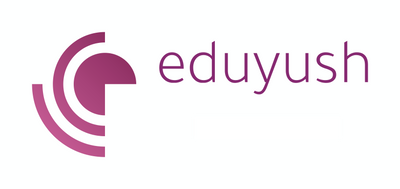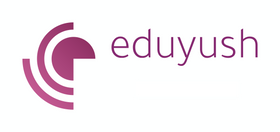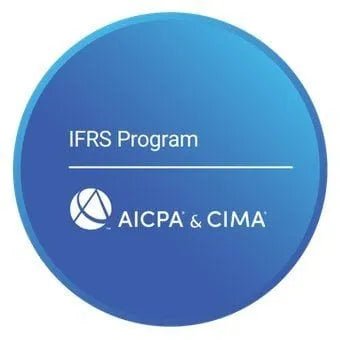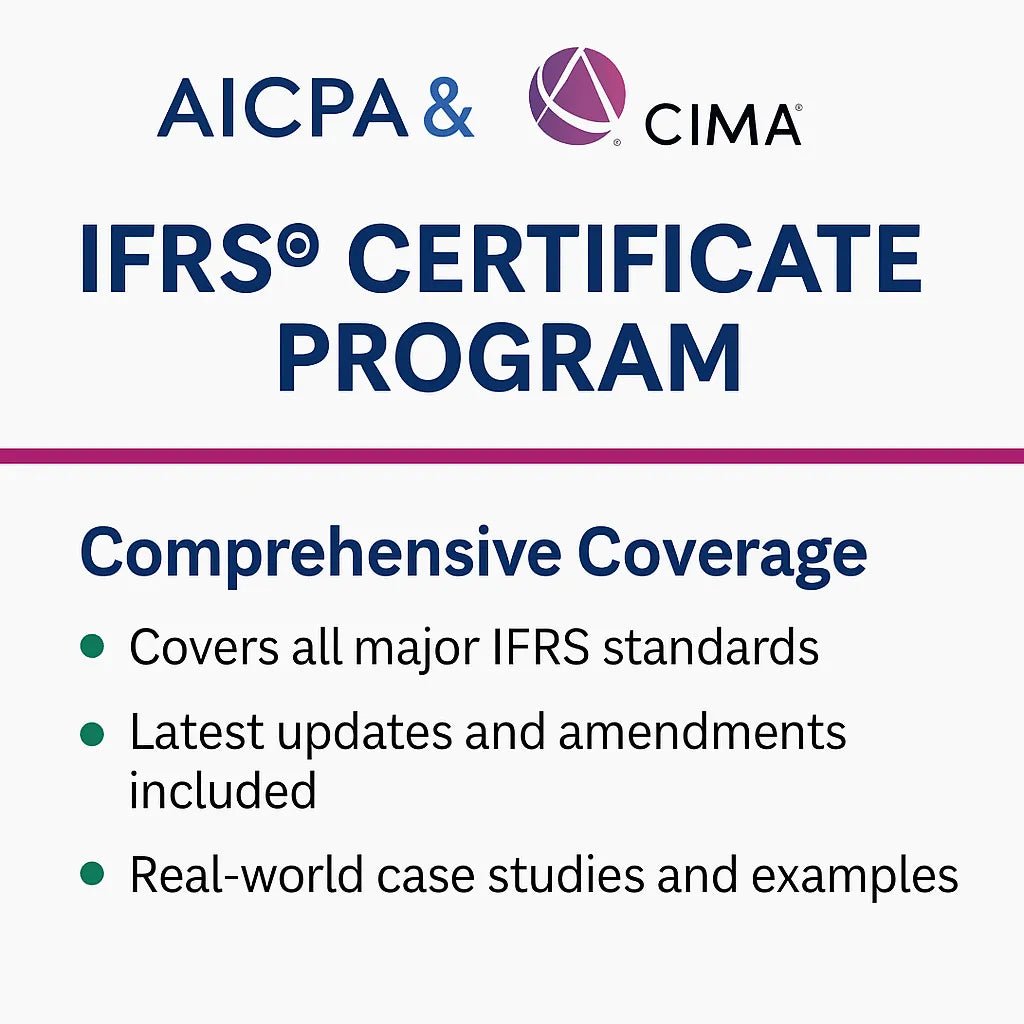50 IFRS 17 Practice Questions with Answers
🎯 Master IFRS 17: 50 Practice Questions Every Student Should Know
🌟 IFRS 17 Practice Question: Ready to Test Your Insurance Contracts Knowledge?
Whether you're preparing for exams, job interviews, or just want to solidify your understanding of IFRS 17, practice makes perfect! These 50 carefully crafted questions cover everything from the General Model to complex reinsurance accounting.
💡 How to Use This Guide:
- ✅ Try answering each question first
- ✅ Then check the solution and explanation
- ✅ Focus extra time on areas where you struggled
- ✅ Use these as flashcards for quick review
Master IAS 16: 50 Practice Questions on PPE, Depreciation & Revaluation
📚 BASIC CONCEPTS (IFRS 17 Practice Questions 1-15)
Question 1 📊
What is the primary objective of IFRS 17?
A) To standardize insurance premium calculations
B) To provide relevant information about insurance contracts that faithfully represents those contracts
C) To eliminate differences between jurisdictions
D) To increase insurance company profitability
✅ Answer: B
Explanation: IFRS 17's objective is to ensure entities provide relevant information that faithfully represents insurance contracts, helping users understand their effect on financial performance and position.
Question 2 🎯
IFRS 17 applies to:
A) All insurance products
B) Insurance contracts issued, reinsurance contracts held, and investment contracts with discretionary participation features
C) Life insurance only
D) Property insurance only
✅ Answer: B
Explanation: IFRS 17 covers insurance contracts issued by entities, reinsurance contracts held, and investment contracts with discretionary participation features issued.
Master IFRS 15: 50 Practice Questions on Revenue Recognition Explained
Question 3 🏪
The three measurement models under IFRS 17 are:
A) Fair value, cost, and amortized cost
B) General Model, Premium Allocation Approach, Variable Fee Approach
C) Present value, future value, and historical cost
D) Risk-based, rule-based, and principle-based
✅ Answer: B
Explanation: IFRS 17 has three models: General Model (Building Block Approach), Premium Allocation Approach (PAA), and Variable Fee Approach (VFA).
Question 4 ⚖️
The General Model measures insurance contract liabilities using:
A) Premium received minus claims paid
B) Fulfilment cash flows plus Contractual Service Margin
C) Fair value adjustments
D) Regulatory reserves
✅ Answer: B
Explanation: Under the General Model, insurance contract liabilities = Fulfilment cash flows + Contractual Service Margin (CSM).
Master IFRS 16: 50 Practice Questions on Lease Accounting & ROU Assets
Question 5 🏢
Fulfilment cash flows comprise:
A) Premiums and claims only
B) Estimates of future cash flows + risk adjustment + discount rate effect
C) Historical cash flows
D) Regulatory requirements
✅ Answer: B
Explanation: Fulfilment cash flows = unbiased probability-weighted estimates of future cash flows + risk adjustment for non-financial risk + effect of time value of money.
Master IFRS 18: 50 Practice Questions on MPMs, Disclosures & Statement Format
Question 6 🏦
The Contractual Service Margin (CSM) represents:
A) Profit from insurance contracts
B) Unearned profit that will be recognized as service is provided
C) Risk premium
D) Regulatory capital
✅ Answer: B
Explanation: CSM represents unearned profit in a group of insurance contracts that will be recognized in profit or loss as the entity provides services.
Question 7 🏗️
Risk adjustment for non-financial risk compensates for:
A) Interest rate risk only
B) Uncertainty about amount and timing of cash flows from non-financial risk
C) Credit risk
D) Market volatility
✅ Answer: B
Explanation: Risk adjustment compensates the entity for bearing uncertainty about the amount and timing of cash flows that arises from non-financial risk.
Question 8 💰
Premium Allocation Approach (PAA) can be used when:
A) Contracts are complex
B) Coverage period is one year or less, OR PAA produces measurement not materially different from General Model
C) Entity chooses freely
D) Premiums are received upfront
✅ Answer: B
Explanation: PAA eligibility requires either: (1) coverage period ≤ one year, or (2) PAA measurement would not differ materially from General Model.
Question 9 🔄
Variable Fee Approach (VFA) applies to:
A) All insurance contracts
B) Insurance contracts with direct participation features
C) Reinsurance contracts only
D) Short-term contracts
✅ Answer: B
Explanation: VFA is a modification of the General Model for insurance contracts with direct participation features, where policyholders share in returns from underlying items.
Question 10 📈
At initial recognition, if fulfilment cash flows exceed premiums received:
A) Recognize profit immediately
B) The contract is onerous - recognize loss immediately
C) Defer recognition
D) Create CSM
✅ Answer: B
Explanation: If fulfilment cash flows > consideration received at initial recognition, the contract is onerous and the excess is recognized as a loss immediately.
Question 11 🎨
Insurance revenue under IFRS 17:
A) Equals premiums received
B) Depicts transfer of promised services at expected consideration
C) Is always recognized ratably
D) Excludes investment components
✅ Answer: B
Explanation: Insurance revenue represents services provided during the period, depicting transfer of promised services at amount reflecting consideration the entity expects for those services.
Question 12 ⚠️
Investment components:
A) Are included in insurance revenue
B) Are amounts paid to policyholder regardless of whether insured event occurs
C) Only apply to life insurance
D) Are always material
✅ Answer: B
Explanation: Investment components are amounts an insurance contract requires the entity to pay to a policyholder regardless of whether an insured event occurs.
Question 13 🏪
Insurance contract groups must be:
A) All contracts of an entity
B) Contracts with similar risks managed together
C) Contracts issued within one calendar year that are onerous, have no significant possibility of becoming onerous, or remaining contracts
D) Contracts from same product line
✅ Answer: C
Explanation: Group contracts issued no more than one year apart into: (1) onerous contracts, (2) contracts with no significant possibility of becoming onerous, (3) remaining contracts.
Question 14 📊
Discount rates should reflect:
A) Entity's cost of capital
B) Risk-free rate only
C) Time value of money, characteristics of cash flows, and liquidity characteristics
D) Market interest rates
✅ Answer: C
Explanation: Discount rates reflect time value of money, characteristics of cash flows from contracts (to extent not reflected in cash flow estimates), and liquidity characteristics.
Question 15 🔍
IFRS 17 effective date (with delays) is:
A) January 1, 2021
B) January 1, 2023
C) January 1, 2025
D) Still being determined
✅ Answer: B
Explanation: IFRS 17 became effective for annual reporting periods beginning on or after January 1, 2023 (originally 2021, delayed to 2023).
🏭 PRACTICAL APPLICATIONS (Questions 16-35)
Question 16 📱
Insurance contract: Expected cash outflows $950, inflows $1,000, risk adjustment $30. At initial recognition:
A) CSM = $50, Loss = $0
B) CSM = $20, Loss = $0
C) CSM = $0, Loss = $20
D) CSM = $80, Loss = $0
✅ Answer: B
Explanation: Fulfilment cash flows = $950 - $1,000 + $30 = $(20). Since negative, CSM = $20. No loss because fulfilment cash flows < consideration.
Question 17 🏠
Contract with coverage period 18 months. Can PAA be used?
A) No, exceeds one year
B) Yes, if produces measurement not materially different from General Model
C) Yes, automatically eligible
D) Only with regulator approval
✅ Answer: B
Explanation: Coverage period >1 year, so PAA only available if it produces measurement that would not be materially different from General Model.
Question 18 💳
Under PAA, liability for remaining coverage equals:
A) Premiums received
B) Premiums received minus insurance acquisition cash flows paid plus amortization
C) Expected claims
D) Regulatory reserves
✅ Answer: B
Explanation: Under PAA, liability for remaining coverage = premiums received - insurance acquisition cash flows paid + amortization of those cash flows.
Question 19 🏢
CSM of $100 at start of year, coverage units provided 20% during year, no changes in estimates. CSM release:
A) $100
B) $20
C) $80
D) $0
✅ Answer: B
Explanation: CSM is released based on coverage units provided: $100 × 20% = $20 released to profit or loss.
Question 20 💼
Contract becomes onerous during measurement period. The onerous amount:
A) Reduces CSM
B) Is recognized as loss in profit or loss
C) First reduces CSM to zero, then loss recognized
D) Is deferred
✅ Answer: C
Explanation: When contract becomes onerous, first reduce CSM to zero, then recognize any remaining amount as lossin profit or loss.
Question 21 🌾
Risk adjustment represents 75th percentile confidence level. This means:
A) 75% chance of profit
B) Entity is 75% confident actual cash flows won't exceed fulfilment cash flows
C) Risk margin is 75% of expected cash flows
D) Regulatory requirement
✅ Answer: B
Explanation: 75th percentile means entity is 75% confident that actual cash flows will not exceed the fulfilment cash flows including risk adjustment.
Question 22 🏗️
Insurance acquisition cash flows of $50 allocated to contract group. Coverage period 5 years, 20% services provided in Year 1. Amortization:
A) $10
B) $50
C) $2.50
D) $40
✅ Answer: A
Explanation: Amortize insurance acquisition cash flows based on coverage provided: $50 × 20% = $10.
Question 23 💰
Reinsurance contract held: Ceding commission $30, premium paid $200. Initial carrying amount of reinsurance asset:
A) $200
B) $170
C) $230
D) Depends on fulfilment cash flows
✅ Answer: B
Explanation: Initial measurement: premium paid ($200) minus ceding commission received ($30) = $170, adjusted for fulfilment cash flows.
Question 24 🔄
Contract modification changes coverage and future premiums. This is treated as:
A) Derecognition and new contract recognition
B) Continuation of original contract with updated terms
C) Depends on whether change in scope and terms
D) Always prospective adjustment
✅ Answer: C
Explanation: If modification changes scope: derecognition + new contract. If only changes terms: continuation as modified contract.
Question 25 🏦
Direct participation features require:
A) Investment returns shared with policyholders
B) Contractual terms specify entity pays policyholders amount equal to fair value of underlying items minus fee
C) Guaranteed returns
D) Separate account structure
✅ Answer: B
Explanation: Direct participation features: contractual terms specify entity pays policyholders amount equal to fairvalue of underlying items, minus entity's fee.
Question 26 📊
Insurance finance expenses in profit or loss under General Model:
A) Equal actual investment returns
B) Effect of discount rate changes and passage of time
C) Equal premium income
D) Risk adjustment changes only
✅ Answer: B
Explanation: Insurance finance income/expenses reflect effect of time value of money and changes in discount rates.
Question 27 🎯
Coverage units for releasing CSM should reflect:
A) Premium amounts
B) Quantity of benefits and expected duration of coverage and claims handling
C) Number of policies
D) Regulatory requirements
✅ Answer: B
Explanation: Coverage units should reflect quantity of benefits provided under contracts, considering coverage and claims handling services.
Question 28 🏪
Investment component of $500 in claims paid. Effect on insurance revenue:
A) Increase revenue by $500
B) No effect on revenue
C) Decrease revenue by $500
D) Recognize as separate line item
✅ Answer: B
Explanation: Investment components are excluded from insurance revenue and insurance service expenses - they don'taffect profit or loss.
Question 29 💡
Liability for incurred claims includes:
A) Only reported claims
B) Claims incurred (including IBNR) plus claims handling costs
C) Cash payments only
D) Regulatory reserves
✅ Answer: B
Explanation: Liability for incurred claims includes fulfilment cash flows for incurred claims (reported and IBNR) plus claims handling costs.
Question 30 🏭
Expected credit losses on reinsurance contracts held:
A) Not applicable
B) Apply IFRS 9 expected credit loss model
C) Use insurance risk adjustment
D) Ignore until default
✅ Answer: B
Explanation: Reinsurance assets are subject to impairment requirements under IFRS 9 expected credit loss model.
Question 31 📈
Premium due but not yet received:
A) Not recognized until received
B) Recognized as insurance receivable under IFRS 9
C) Included in insurance contract liability
D) Treated as off-balance sheet
✅ Answer: B
Explanation: Premiums due but not received are insurance receivables, accounted for under IFRS 9, not part of insurance contract liability.
Question 32 🏢
Discount rates must be updated:
A) Annually only
B) At each reporting date
C) When materially different
D) Upon contract modification
✅ Answer: B
Explanation: Discount rates are updated at each reporting date to reflect current assumptions about time value of money and risk characteristics.
Question 33 🎨
Loss component of liability for remaining coverage:
A) Is released to profit or loss immediately
B) Is released before other components as services are provided
C) Remains until contract end
D) Reduces CSM
✅ Answer: B
Explanation: Loss component is released first as the entity provides services, before releasing other components of liability for remaining coverage.
Question 34 ⚖️
CSM cannot be:
A) Increased
B) Negative
C) Released over time
D) Adjusted for estimate changes
✅ Answer: B
Explanation: CSM cannot be negative. If adjustments would make it negative, the excess is recognized immediately as loss.
Question 35 🔄
Estimates changes that relate to future service:
A) Adjust CSM (if not loss making)
B) Recognized immediately in profit or loss
C) Create separate liability
D) Affect risk adjustment only
✅ Answer: A
Explanation: Changes in estimates relating to future coverage adjust CSM (for contracts not onerous), not immediately affecting profit or loss.
🎓 ADVANCED CONCEPTS (Questions 36-50)
Question 36 📊
Under VFA, CSM is adjusted for:
A) All estimate changes
B) Entity's share of changes in fair value of underlying items
C) Interest rate changes only
D) Regulatory changes
✅ Answer: B
Explanation: Under VFA, CSM is adjusted for entity's share of changes in fair value of underlying items, in addition to other adjustments.
Question 37 🔍
Reinsurance contracts held cannot have:
A) Negative CSM
B) Risk adjustment
C) Expected credit losses
D) Onerous contract losses at initial recognition
✅ Answer: D
Explanation: Reinsurance contracts held cannot be onerous at initial recognition - any deficit creates loss recovery asset instead.
Question 38 🏦
Insurance finance income/expenses can be presented:
A) In profit or loss only
B) In OCI only
C) Partly in profit or loss and partly in OCI (for certain contracts)
D) As separate component of equity
✅ Answer: C
Explanation: Entity can choose to disaggregate insurance finance income/expenses between profit or loss and OCI for contracts with direct participation features.
Question 39 📈
Portfolio-level assessment is permitted:
A) For all contracts
B) If result not materially different from individual contract assessment
C) Only for short-term contracts
D) Only with regulatory approval
✅ Answer: B
Explanation: Portfolio approach can be used if the result would not be materially different from applying requirements to individual contracts.
Question 40 🎯
Cedant's accounting for reinsurance held:
A) Mirrors direct insurance contract accounting
B) Uses modified General Model approach
C) Always uses fair value
D) Follows ceding commission method
✅ Answer: B
Explanation: Reinsurance contracts held use modified approach: similar to General Model but with different terminology (recovery instead of CSM) and specific rules.
Question 41 🏭
IFRS 17 transition: Modified retrospective approach:
A) Is optional for all entities
B) Can be used when full retrospective approach is impracticable
C) Requires complete restatement
D) Is not permitted
✅ Answer: B
Explanation: Modified retrospective approach is permitted when full retrospective application is impracticable, using specified modifications to approximate retrospective application.
Question 42 📊
Level of aggregation for contract groups:
A) Entity level
B) Can be lower than portfolio level but not higher
C) Product line level
D) Regulatory segment level
✅ Answer: B
Explanation: Entity may divide portfolio into groups at lower level of aggregation (more granular) but cannot include contracts from different portfolios in same group.
Question 43 🔄
Business combination: Acquirer measures insurance contracts at:
A) Fair value
B) As if it had issued the contracts at acquisition date
C) Carrying amount from acquiree
D) Regulatory value
✅ Answer: B
Explanation: In business combinations, acquirer measures acquired insurance contracts as if it had issued them at acquisition date.
Question 44 🏢
Interim financial reporting under IFRS 17:
A) Requires full recalculation
B) Allows reasonable estimation techniques
C) Must wait until year-end
D) Uses simplified approach
✅ Answer: B
Explanation: For interim reporting, entity may use reasonable estimation techniques for risk adjustment and CSM allocation, if results not materially different.
Question 45 📈
Experience adjustments are:
A) Always recognize in profit or loss
B) Differences between actual experience and previous estimates
C) Future estimate changes
D) Discount rate changes
✅ Answer: B
Explanation: Experience adjustments are differences between actual experience and previous estimates of cash flows - they relate to current and past service.
Question 46 🎯
Insurance acquisition cash flows include:
A) All selling expenses
B) Costs directly attributable to selling, underwriting, and starting contracts that result from contracts
C) General administrative costs
D) Marketing costs
✅ Answer: B
Explanation: Insurance acquisition cash flows are costs of selling, underwriting, and starting contracts that are directly attributable to the portfolio and arise from contracts in that portfolio.
Question 47 🏦
Contractual service margin represents:
A) Profit margin set by management
B) Compensation for providing insurance contract services in future
C) Risk premium
D) Regulatory capital requirement
✅ Answer: B
Explanation: CSM represents entity's compensation for providing insurance contract services in the future, recognized as services are provided.
Question 48 📊
Fulfilment cash flows exclude:
A) Claims handling costs
B) Policy administration costs
C) Cash flows outside contract boundary
D) Acquisition costs
✅ Answer: C
Explanation: Fulfilment cash flows include only cash flows within the contract boundary - those arising from substantive rights and obligations.
Question 49 🔄
Contract boundary is defined by:
A) Legal terms only
B) Substantive rights and obligations - practical ability to set price reflecting risks
C) Policy period
D) Premium payment period
✅ Answer: B
Explanation: Contract boundary encompasses cash flows from substantive rights/obligations - beyond boundary when entity has practical ability to reassess risks and set price/benefits.
Question 50 🎯
IFRS 17's impact on financial statements includes:
A) Revenue equals premiums collected
B) More volatile profit patterns and comprehensive balance sheet information
C) Simplified reporting
D) Elimination of estimates
✅ Answer: B
Explanation: IFRS 17 typically results in more volatile profit patterns (front-loading profits less) and provides more comprehensive information about insurance contracts on balance sheet.
🎯 How Did You Score on IFRS 17 Practice questions?
45-50 Correct: 🏆 IFRS 17 Expert! You've mastered insurance contract accounting
35-44 Correct: 📚 Strong Foundation - Review the concepts you missed
25-34 Correct: 📖 Good Start - Focus on practical applications
Below 25: 🎓 Keep Learning - Review basic concepts and try again
🚀 Next Steps for Students on IFRS 17 Practice questions
- ✅ Review missed questions and understand the explanations
- ✅ Practice with real insurance company examples from annual reports
- ✅ Join study groups to discuss complex scenarios
- ✅ Follow updates to IFRS 17 from the IASB
- ✅ Apply knowledge in internships or case studies
🎓 Ready to Master IFRS Completely?
These practice questions are just the beginning! Eduyush offers comprehensive IFRS training that will take yourknowledge to the next level:
📚 AICPA IFRS Certification Course 🪙 Cutting-edge topics including crypto accounting 🎯 Real-world case studies and applications 🏆 Preparation for emerging accounting challenges
📚 Diploma in IFRS 🌍 International perspective on evolving standards 💻 Technology-integrated accounting education 👨🏫 Expert instructors who understand innovation
👨🏫 Learn from experienced IFRS practitioners
🚀 Transform your understanding of IFRS from basic to expert level with Eduyush!
FAQs
ACCA blogs
Follow these links to help you prepare for the ACCA exams
IFRS blogs
Follow these blogs to stay updated on IFRS
Formats
Use these formats for day to day operations
- Account closure format
- Insurance claim letter format
- Transfer certification application format
- Resignation acceptance letter format
- School leaving certificate format
- Letter of experience insurance
- Insurance cancellation letter format
- format for Thank you email after an interview
- application for teaching job
- ACCA PER examples
- Leave application for office
- Marketing manager cover letter
- Nursing job cover letter
- Leave letter to class teacher
- leave letter in hindi for fever
- Leave letter for stomach pain
- Leave application in hindi
- Relieving letter format
Interview questions
Link for blogs for various interview questions with answers
- Strategic interview questions
- Accounts payable interview questions
- IFRS interview questions
- CA Articleship interview questions
- AML and KYC interview questions
- Accounts receivable interview questions
- GST interview questions
- ESG Interview questions
- IFRS 17 interview questions
- Concentric Advisors interview questions
- Questions to ask at the end of an interview
- Business Analyst interview questions
- Interview outfits for women
- Why should we hire you question
leave application format
- Leave application for office
- Leave application for school
- Leave application for sick leave
- Leave application for marriage
- leave application for personal reasons
- Maternity leave application
- Leave application for sister marriage
- Casual leave application
- Leave application for 2 days
- Leave application for urgent work
- Application for sick leave to school
- One day leave application
- Half day leave application
- Leave application for fever
- Privilege leave
- Leave letter to school due to stomach pain
- How to write leave letter
Insurance blogs
- Sample letter of appeal for reconsideration of insurance claims
- How to increase insurance agent productivity
- UAE unemployment insurance
- Insurance cancellation letter
- Insurance claim letter format
- Insured closing letter formats
- ACORD cancellation form
- Provision for insurance claim
- Cricket insurance claim
- Insurance to protect lawsuits for business owners
- Certificate holder insurance
- does homeowners insurance cover mold
- sample letter asking for homeowner right to repair for insurance
- Does homeowners insurance cover roof leaks













Leave a comment